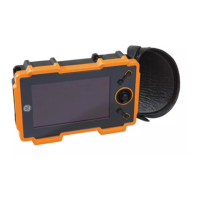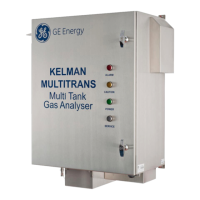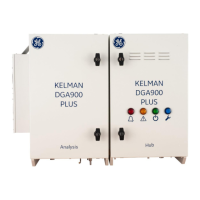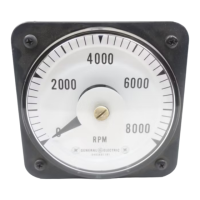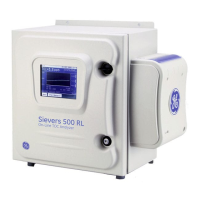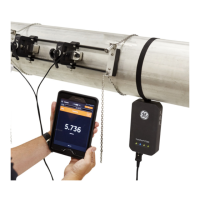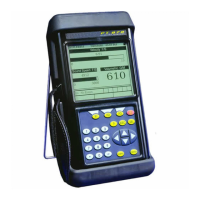5-72 Issue 01, 04/2005 Krautkramer USM 35X
Operation Evaluation according to the DGS method (only USM 35X S)
• Distance D between the probe and circular disk-
shaped equivalent reflector
• Difference in gain G between various large circular
disk-shaped equivalent reflectors and an infinitely
large backwall
• Size S of the circular disk-shaped equivalent reflec-
tor. The influencing variable S always remains
constant for one curve of the set of curves
The advantage of the DGS method lies in the fact that
you can carry out reproducible evaluations of small
discontinuities. The reproducibility is most of all impor-
tant, for example, whenever you aim to carry out an
acceptance test.
Apart from the influencing variables already mentioned,
there are other factors determining the curve shape:
• sound attenuation
• transfer losses
• amplitude correction value
• probe.
The following probe parameters affect the curve shape:
• element or crystal diameter
• frequency
• delay length
• delay velocity
You can adjust these parameters on the USM 35X S in
such a way that you can use the DGS method with
many different probes and on different materials.
H Note:
Before setting the DGS function, the instrument must
first be calibrated because all functions affecting the
DGS evaluation mode (MTLVEL, P-DELAY, DAMPING,
POWER, FINE G, FREQU, RECTIFY) can no longer be
changed after the reference echo has been recorded.
Please also refer to chapter 5.7
Calibrating the
USM 35X
on this subject.
5-72 Issue 01, 04/2005 Krautkramer USM 35X
Operation Evaluation according to the DGS method (only USM 35X S)
• Distance D between the probe and circular disk-
shaped equivalent reflector
• Difference in gain G between various large circular
disk-shaped equivalent reflectors and an infinitely
large backwall
• Size S of the circular disk-shaped equivalent reflec-
tor. The influencing variable S always remains
constant for one curve of the set of curves
The advantage of the DGS method lies in the fact that
you can carry out reproducible evaluations of small
discontinuities. The reproducibility is most of all impor-
tant, for example, whenever you aim to carry out an
acceptance test.
Apart from the influencing variables already mentioned,
there are other factors determining the curve shape:
• sound attenuation
• transfer losses
• amplitude correction value
• probe.
The following probe parameters affect the curve shape:
• element or crystal diameter
• frequency
• delay length
• delay velocity
You can adjust these parameters on the USM 35X S in
such a way that you can use the DGS method with
many different probes and on different materials.
H Note:
Before setting the DGS function, the instrument must
first be calibrated because all functions affecting the
DGS evaluation mode (MTLVEL, P-DELAY, DAMPING,
POWER, FINE G, FREQU, RECTIFY) can no longer be
changed after the reference echo has been recorded.
Please also refer to chapter 5.7
Calibrating the
USM 35X
on this subject.
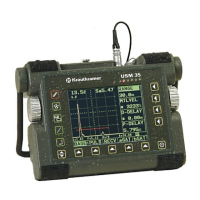
